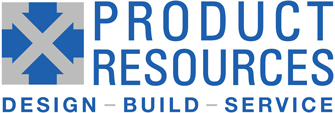To build a product consistently, with minimal variation from unit to unit or batch to batch, the product and its assembly processes must be described with enough detail to allow the manufacturer to control how the product is built. The manufacturer will need detailed information on:
- Material definition and sources
- Assembly processes and process control points
- Test requirements and records
- Assembly and Test fixtures
- Schedule
Why can’t you just start manufacturing once you have already produced Alpha and Beta prototypes without this level of detail?
First, consider what it took to build the Beta prototype. Engineers had to be involved in its procurement, inspection of material, and assembly. Engineers do a great job at this because when something isn’t quite perfect, they have the authority to “make it fit” – change a screw to a different size, open a hole, add a backing plate, etc. The manufacturer has no such authority and if they did, would you want them to be making ad-hoc changes to your product? Do they know as much about your product as your engineers? [Answer: NO]. The manufacturer is hired to do exactly what you tell them.
If the Beta Prototypes are truly successful samples of the production design, you can use the Beta Prototypes for regulatory approval (because there would be no changes from the Beta design to the production design) and you would be able to ship the Beta Prototypes to customers or at least use them as Sales Demo Units. Still, they were built by engineers, and not by a production process, which is a key distinction.
The difference between a Beta Prototype and a Production Unit is the Documentation which details information so that the manufacturer can design a process and know that the product has been correctly built. That documentation is the technical knowledge transfer between engineering and manufacturing.
Transferring this information, complete, to a manufacturer (whether internally or to a contract manufacturer like Product Resources) uses a “Release to Manufacturing” (RTM) event which indicates that all information is ready, and manufacturing can begin.
The next sections of this chapter detail the information necessary for RTM. The first section details the Bill of Material requirements, while the next discusses how to define the components (Commercial, Custom, sub-assemblies, etc.). We also discuss the Assembly Documents and Test Documents required to control the process.
Scheduling – As your plans change and depending on the structure of the business agreement between you and a contract manufacturer, there are ways of adjusting the schedule for shipping products to you or your customer. These range from a Purchase Order to a Supply Contract. Each affects the material flow, inventory, and delivery times in different ways.
These documents are the minimum requirements necessary to have successful RTM. Can you supply additional documents, or help by having an engineer train an assembler or technician? Of course. That knowledge, however, is not a substitute for writing it down. Personnel change, people interpret explanations differently, sometimes they simply forget.
Keep in mind, if it isn’t in writing, it didn’t happen.
